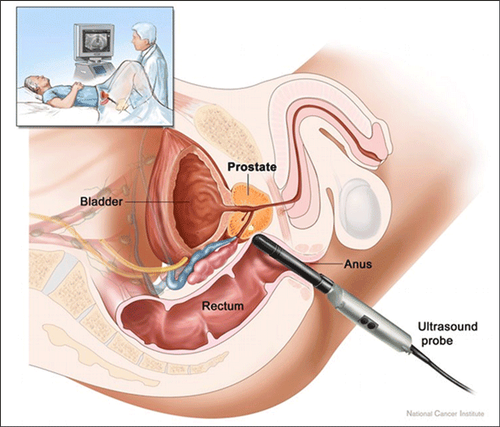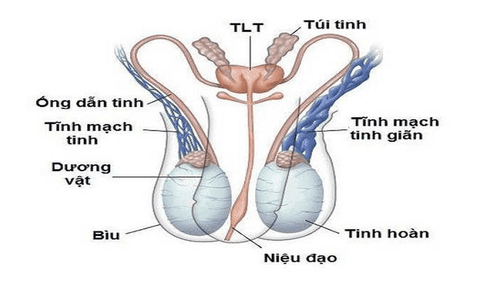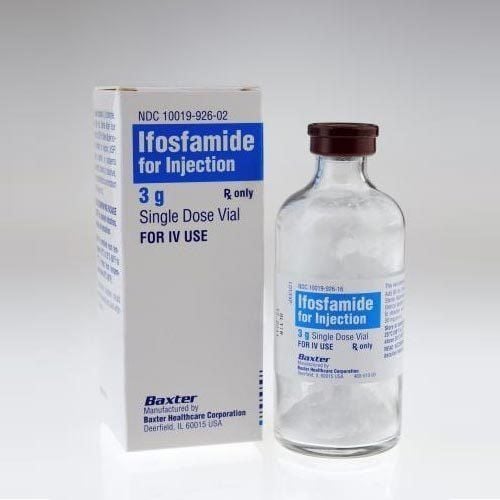This is an automatically translated article.
Biopsy is a procedure where several pieces of prostate tissue are removed for cytological analysis by microscopy to determine whether the tissue is benign or malignant.1. What is a prostate biopsy?
The prostate is a gland that exists only in men. The prostate gland is located below the bladder and surrounds the ureters. The prostate gland plays a role in the production of semen.
Prostate biopsy is a procedure in which the doctor takes a tissue sample from the prostate gland to take for pathological examination (examination under a microscope) to determine the presence of cancer.
Prostate biopsy is indicated when screening results (blood test or rectal examination) suggest the presence of prostate cancer.

Sinh thiết tiền liệt tuyến là kĩ thuật sử dụng để xác định có sự tồn tại của ung thư hay không
2. When is a prostate biopsy needed?
The doctor may order a prostate biopsy if the level of prostate-specific antigen (PSA) in the blood is increased or the rectal examination reveals an abnormal mass.
In addition, prostate biopsy may also be indicated in cases where the results of the previous biopsy are normal but the PSA level is still elevated, or the results of the previous biopsy have shown abnormal cells. normal but not cancerous.
Rectal examination is a clinical examination technique, the doctor will insert a finger into the rectum to check if the prostate gland is enlarged, there is no abnormal mass.
Before the biopsy, the doctor may also order a transrectal ultrasound of the prostate.
3. Prostate Biopsy Techniques
Prostate biopsies can be done using a variety of techniques, including:
Transrectal Prostate Biopsy : The biopsy needle will go through the anal wall to enter the prostate gland. This is the most commonly used technique. Perineal prostate biopsy: The biopsy needle will pass through the skin at the perineum (the area between the anus and the scrotum) into the prostate gland. Transurethral Prostate Biopsy: A biopsy of the prostate gland using a cystoscope. Prostate biopsy techniques can be performed under the guidance of diagnostic imaging (eg, ultrasound, computed tomography, magnetic resonance imaging).
4. Possible risks during prostate biopsy
Like any other technique, there are certain risks associated with a prostate biopsy. Those risks include:
Bleeding at the biopsy site : Rectal bleeding is common after a prostate biopsy. Blood in the semen: After a prostate biopsy, there will often be blood in the semen, causing the semen to appear red. This is common, and can last up to several weeks.

Xuất hiện máu trong tinh dịch là hiện tượng phổ biến sau sinh thiết tiền liệt tuyến
Presence of blood in the urine : If present, usually very little. Difficulty urinating: In some cases, after a prostate biopsy, the patient has difficulty urinating, and rarely requires a transureteral bladder drainage. Infection: Rarely, a urinary tract infection or prostate infection may occur after a biopsy.
5. Preparation Before Performing a Prostate Biopsy
Patients can consult their doctor about all their questions. The patient also needs to sign a written consent to perform the prostate biopsy technique. Patients should inform their doctor if they are sensitive or allergic to anything. Patients should inform their doctor about their medical history, as well as all medications and supplements they are taking, especially anticoagulants. Depending on the technique of prostate biopsy to be performed and the specific condition of the patient, the doctor will have his own appropriate preparation instructions.
6. Care After Prostate Biopsy
The care after prostate biopsy will depend on the biopsy technique performed and the specific condition of the patient, the doctor will give detailed instructions to the patient.
After a prostate biopsy, a patient may experience a feeling of urgency or urgency, but that is nothing to worry about and usually resolves on its own within a few hours.
There may be blood in the urine or stools for a few days after the biopsy, and this is common. Semen may also show blood for several weeks since the biopsy, and is also normal.

Có thể có máu xuất hiện trong nước tiểu trong vài ngày sau khi sinh thiết
The biopsy site may be painful for a few days, take pain relievers as prescribed by your doctor.
Contact your doctor immediately if any of the following signs appear:
Increased amount of blood in the urine or stools. Pain in the hip or pelvis. Having problems with urination. Change in urine color, urine that has an unpleasant odor, or a burning sensation when urinating (may be signs of an infection). Fever and/or chills.
7. Get prostate biopsy results
Biopsy results will be explained in detail by the doctor. Depending on the specific results, the doctor may order follow-up, conduct some more tests, or discuss possible treatments. The doctor will agree on the optimal plan for the patient's case. Patients should follow their doctor's instructions for the best treatment results.
For detailed advice on prostate biopsy techniques at Vinmec, you can go directly to Vinmec medical system nationwide or contact to book online HERE.
Articles refer to the source: webmd.com
MORE:
Treatment of orchitis Complications of orchitis Signs of children with undescended testicles













